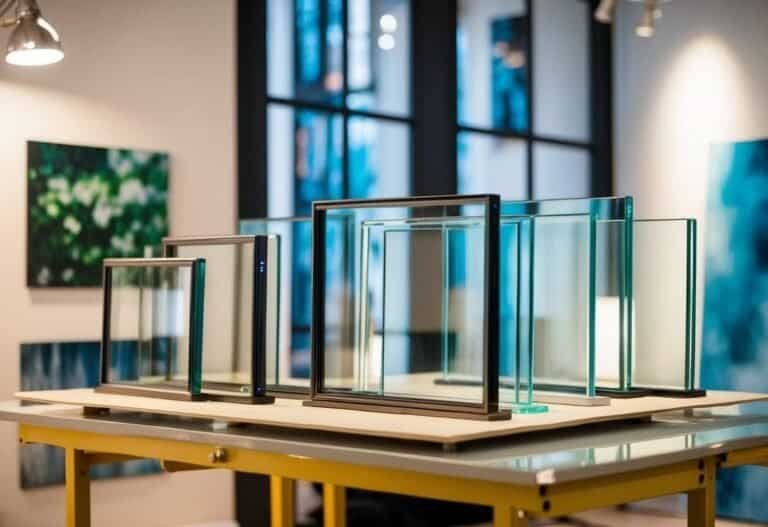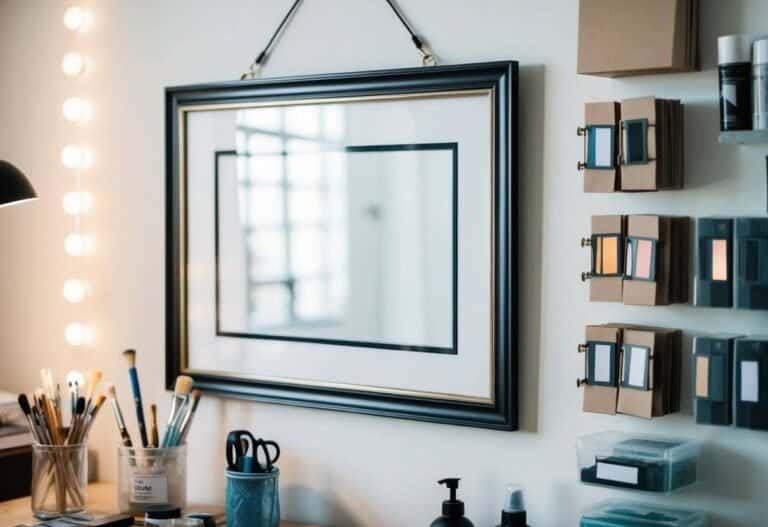Protecting Framed Art in Humid Environments: Essential Tips to Prevent Mold and Mildew
Humidity can threaten framed art, risking damage from mold and mildew. To keep mold and mildew away, control the humidity levels where the art is displayed.
This is key in protecting your investment and keeping your artwork in great condition for years to come. Regular monitoring is essential, and one must consider ways to maintain appropriate climate conditions. This involves using dehumidifiers or air conditioning to help regulate moisture.
With the right equipment and care, you can create a balanced environment for your art. Routine maintenance is also important to prevent damage.
Frequent cleaning and careful inspections can help catch any issues early. By using specific strategies, art lovers can ensure that their collections stay beautiful and safe.
Key Takeaways
- Control humidity levels to prevent mold and mildew.
- Monitor and manage climate conditions regularly.
- Routine cleaning and inspections protect your art.
Understanding the Impact of Humidity on Framed Art
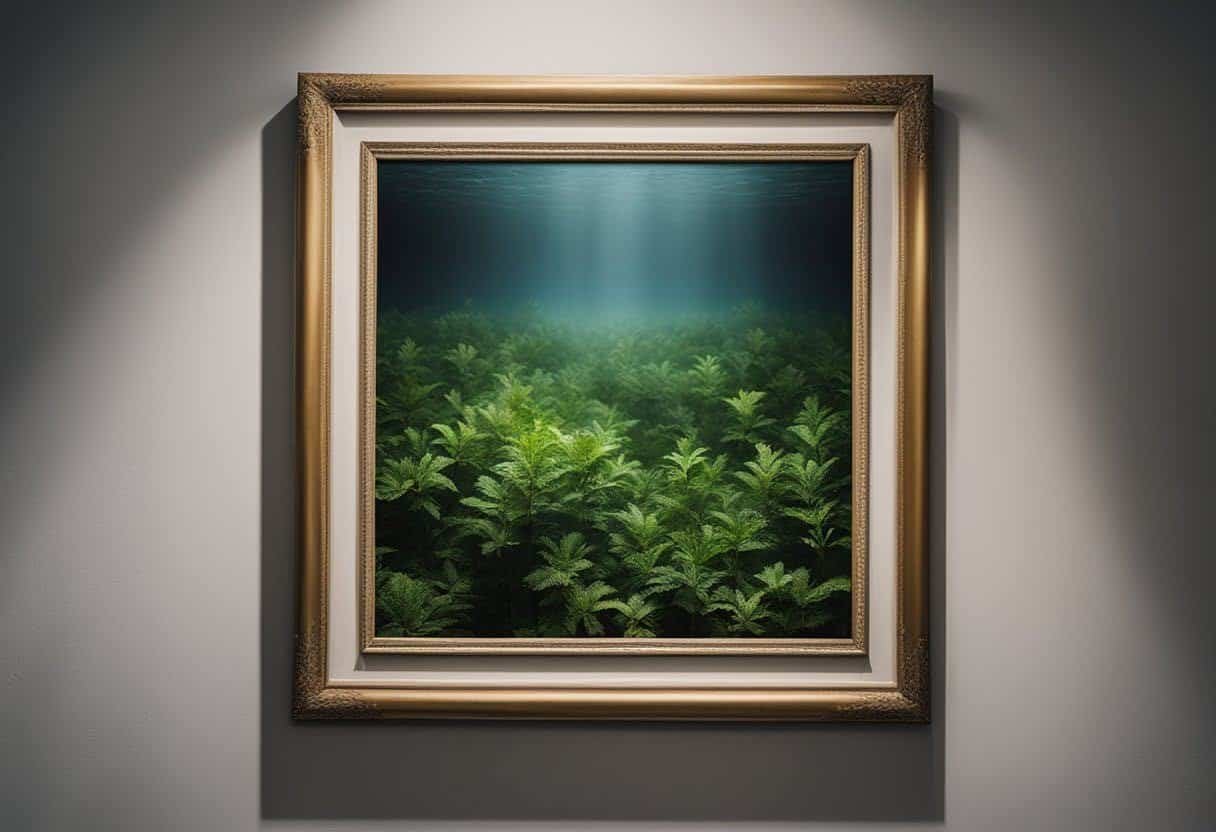
Humidity can have a significant effect on framed art, threatening its longevity and beauty. If the relative humidity is too high, mold and mildew growth can occur, damaging both the frame and the artwork itself.
The Science of Mold and Mildew
Mold and mildew are types of fungi that thrive in warm, moist environments.
They can grow on a variety of surfaces, including paper, canvas, and wood.
When humidity levels exceed 60%, the risk of mold growth increases.
Spores are microscopic and can settle on any surface. Once they establish, they multiply rapidly, especially in poorly ventilated spaces.
Mold not only leaves stains but can also degrade materials. This degrades the integrity of the artwork. Over time, this may cause discoloration, warping, or even complete deterioration.
How Humidity Damages Artwork
High humidity can cause serious issues for framed art.
Paper and canvas can absorb moisture, leading to warping or rippling. This is often irreversible and can ruin the aesthetic value of the piece.
Wood frames can expand and contract with changes in humidity, which can lead to cracks or separations.
Moreover, the glass covering artwork can develop condensation if the humidity is too high.
While this might seem like a minor issue, repeated exposure can encourage the growth of mold and mildew on the surface of the artwork.
Maintaining stable environmental conditions is crucial in preventing these kinds of damage.
Monitoring Climate Conditions
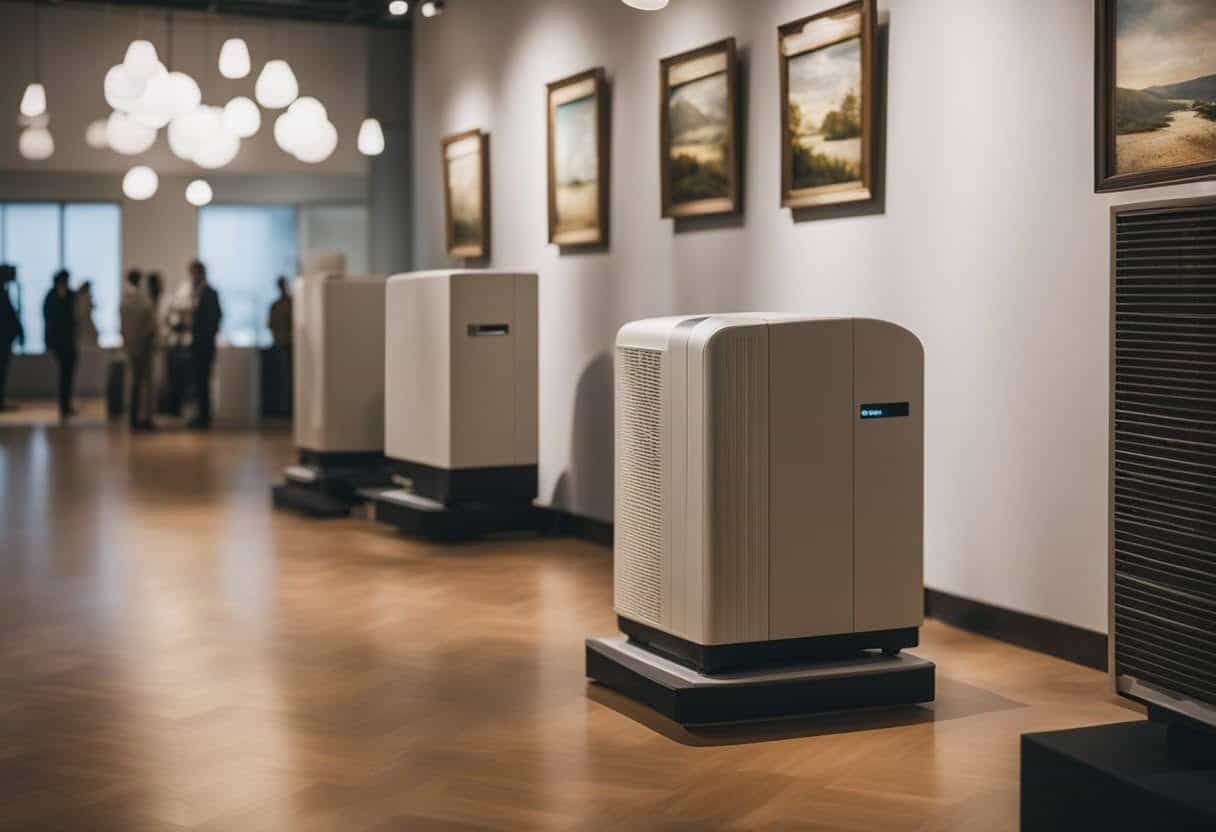
Keeping an eye on climate conditions is crucial for protecting framed art from damage. High humidity and fluctuating temperatures can lead to mold and mildew growth.
Regular monitoring helps maintain stable conditions and prevents costly repairs or replacements.
Assessing Your Environmental Conditions
Understanding the climate where art is displayed is essential.
Discussing the room’s purpose is helpful. For instance, is it a basement or a living area? Basements often have higher humidity.
It’s wise to check humidity levels seasonally. In summer, they usually rise, and in winter, they can drop.
Use your senses; if a room feels muggy, it could mean high humidity.
Awareness of local climate trends aids in understanding expected ranges.
Tools for Measuring Humidity and Temperature
Various tools are available to track climate conditions.
A hygrometer is vital for measuring humidity levels. Look for digital models with updates every few seconds. Some models also track temperature, helping with dual monitoring.
Consider a thermometer for accurate temperature readings.
For more control, a humidifier can add moisture in dry seasons, while a dehumidifier reduces humidity in damp conditions.
Using these tools regularly ensures conditions remain optimal for preserving the art.
Certain devices offer alert settings, notifying about changes before they become serious issues.
Preventive Strategies
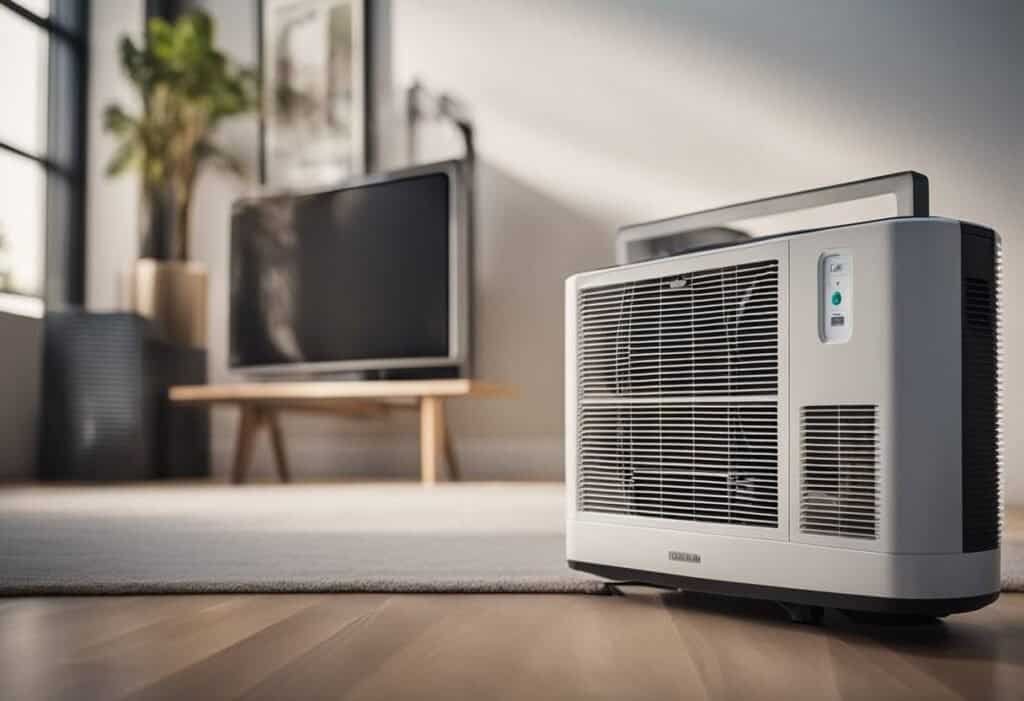
To protect framed artwork from mold and mildew, it’s essential to control humidity, maintain air circulation, and ensure temperature stability.
These strategies, involving dehumidifiers, proper ventilation, and the right framing techniques, can significantly help in preserving art.
Effective Use of Dehumidifiers
Dehumidifiers play a significant role in keeping humidity levels low to prevent mold growth.
They extract moisture from the air, reducing the chances for mold and mildew to thrive on framed artwork.
It’s important to choose a dehumidifier suitable for the room size.
Continuous drainage options prevent frequent emptying. Energy-efficient models help save on electricity costs.
Placement is crucial; a centrally located dehumidifier increases effectiveness.
Regular maintenance, like cleaning filters, ensures optimal performance.
Monitoring humidity levels with a hygrometer helps maintain the ideal range, typically between 40-50%.
Optimizing Air Circulation and Ventilation
Proper air circulation prevents moisture buildup around artwork.
Using fans to improve circulation helps disperse any excess moisture in the air.
Ceiling fans or portable fans can create airflow that deters humidity from settling.
Opening windows regularly, if possible, enhances natural ventilation.
Installing an exhaust fan in areas prone to dampness boosts ventilation.
Avoid direct drafts on artworks, which can stress the materials.
Instead, position airflow to indirectly reduce humidity’s impact.
Consistent airflow reduces stagnant conditions where mold could flourish.
Importance of Consistent Temperature Control
Temperature fluctuations can affect both humidity and the physical state of framed artwork.
Keeping a stable environment guards against expanding and contracting materials that can create conditions favorable to mold.
Aim for a consistent room temperature around 70°F (21°C).
Use HVAC systems to regulate temperature, ensuring they are in good working order to avoid unexpected changes.
Thermostats with programmable settings allow precise control.
Avoid placing artwork in areas with direct sunlight or near heat sources, as these spots can experience drastic temperature swings.
Protective Materials and Framing Techniques
Choosing the right materials for framing enhances protection against humidity.
Acid-free materials for mounts and backings prevent chemical reactions that could damage art.
Use frames with tight seals to block moisture ingress.
Consider glazing with UV-protective glass or acrylic to shield artwork from light and environmental changes.
Adding a silica gel packet inside the frame can absorb any residual moisture.
Regular inspections ensure that all elements remain secure and intact, maintaining the art’s safety from humidity-induced harm.
Routine Maintenance and Cleaning
Maintaining framed art in humid environments is essential to prevent mold growth.
Regular inspections and cleaning play a crucial role in preserving artwork. Using UV light can provide additional protection.
Scheduling Regular Artwork Inspections
Routine checks are important for framed art, especially in humid places.
Inspections every few months can help identify early signs of mold or mildew.
Look for spots or a musty smell around the frame and backing.
Pay attention to corners and hidden areas, as mold can thrive in these places.
During inspections, checking the condition of the frame and glass is also important. Loose or damaged parts can let in more moisture, which increases the risk of mold.
Proper Cleaning Practices to Prevent Mold
Keeping framed art clean is vital to preventing mold.
Dust can trap moisture, so it’s best to dust the frame regularly using a soft, dry cloth.
Avoid using wet cleaners on frames and glass because they can add moisture.
If deeper cleaning is needed, a slightly damp cloth can be used carefully.
Use cleaning solutions made for art when needed, as they are safe and protect the work.
Test any solution on a tiny, hidden part of the frame first to ensure there is no damage. Cleaning should be gentle to avoid harming the artwork.
Using UV Light for Additional Protection
UV light can help protect against mold by reducing moisture and killing mold spores.
Frames that are exposed to a lot of humidity can benefit from devices that use UV light. These should be used alongside other methods like inspections and cleaning.
Adding UV filters or coated glass to frames can also help.
This helps in blocking harmful rays and reduces the fading of artwork.
When using UV lights, position them so they cover the entire frame without creating too much heat.
Solutions for High Humidity Environments
Managing high humidity to protect framed art is crucial.
Strategies include altering interior design elements to control moisture and choosing art materials resilient to damp conditions.
Adapting Interior Design to Minimize Moisture
Adjusting interior design can greatly lessen humidity’s impact on art.
Dehumidifiers are effective at removing excess moisture, especially in closed spaces.
Air conditioners also help by maintaining cooler, drier air.
Ensuring good ventilation is key; fans and ventilated storage areas can prevent moisture buildup.
Using moisture-resistant materials in the room, like vinyl flooring and mold-resistant paint on walls, can add an extra layer of protection.
Sealing windows and doors with weather-stripping reduces the entry of humid air from outside.
Selecting Art with High Humidity Resistance
Choosing artworks made from materials that withstand humidity is vital.
Oil paintings, for example, are more resistant than watercolors.
Selecting art with acrylic paints can also offer protection since they are less prone to water damage.
Additionally, consider metal and glass frames, which are more resistant to moisture than wood.
Archival-quality mats and backing can provide extra protection.
When possible, use UV-protective glass or acrylic to shield art not just from light, but also from humidity damage.
Tips for Art Collectors
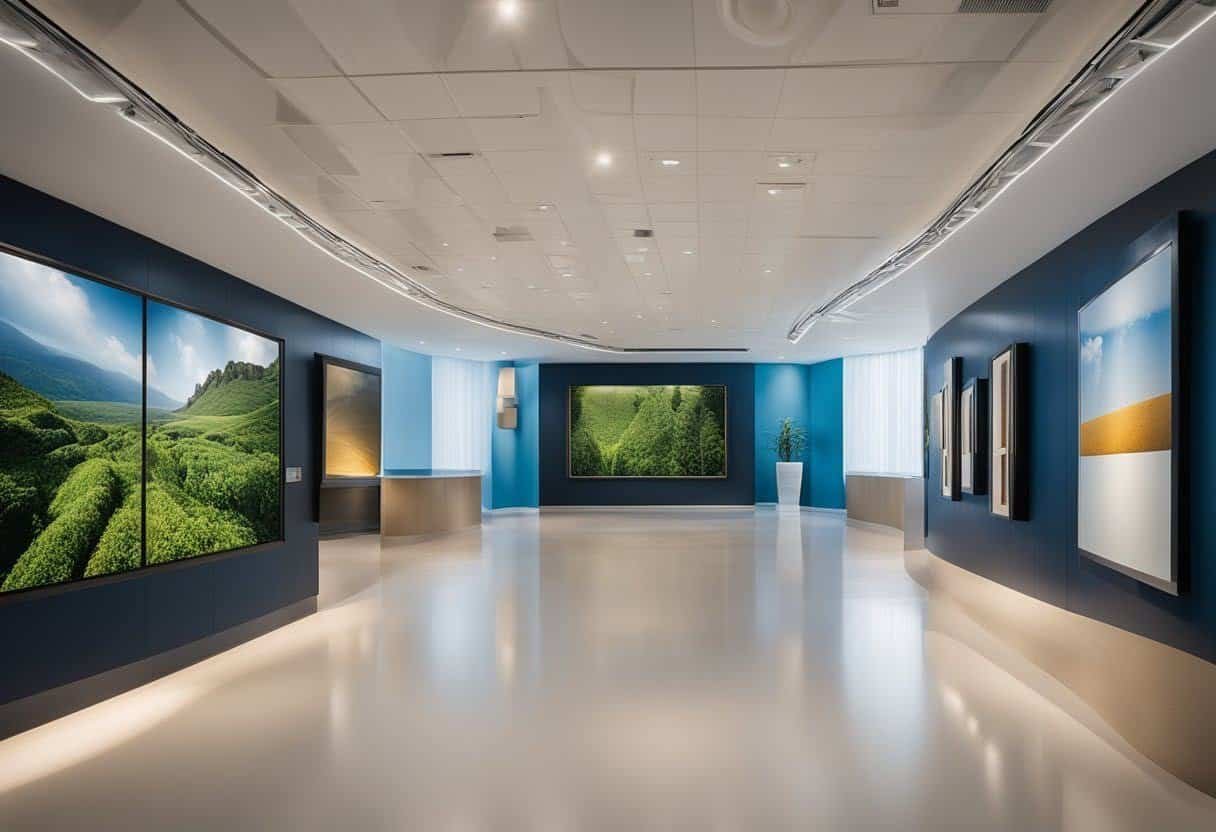
Art collectors often face challenges with maintaining framed artwork, especially in humid environments where mold spores thrive.
Proper strategies are essential in both storing and handling art to prevent damage.
Preservation Strategies for Long-Term Storage
Mold can damage art if not properly protected. Collectors should control humidity by using dehumidifiers or climate-controlled storage. Ideal relative humidity is around 40-50%.
Frames also need attention. Use acid-free backing and materials. This helps to prevent mold.
Periodically check the art for any signs of moisture or mold.
An airtight frame or protective glass can add an extra layer of defense. Make sure there is enough air circulation around the piece when it’s in storage. This limits moisture buildup that encourages mold.
Handling and Transportation of Sensitive Artworks
When moving art, it is vital to protect it from changes in humidity. Use sealed packaging. This provides a stable environment during transit, reducing exposure to moisture.
For transportation, use bubble wrap or other protective materials to shield art from physical damage.
Include silica gel packs with the art to absorb any moisture that might be trapped during transport.
If possible, climate-controlled vehicles should be used for transporting highly sensitive pieces. This adds another layer of protection against fluctuations in temperature and humidity.
Safety Considerations
When maintaining framed art in humid environments, it’s crucial to think about personal safety. Handling mold requires specific precautions to avoid health risks. Using protective gear minimizes exposure to mold spores that can cause allergic reactions and respiratory issues.
Protecting Yourself from Mold Exposure During Art Maintenance
Art conservation can expose individuals to mold and mold spores. It’s important to wear suitable protective gear like gloves, masks, and goggles.
N95 masks are effective in filtering out dangerous spores. Meanwhile, gloves protect hands from contact, while goggles safeguard eyes.
Keep the work area well-ventilated. Fans and open windows help disperse any airborne spores. After handling moldy art, hygiene is key. Washing hands thoroughly prevents accidental ingestion or skin irritation from mold contact.
Regularly check your protective gear for any damage or wear and replace it as needed. This ensures effective protection throughout the art maintenance process.



